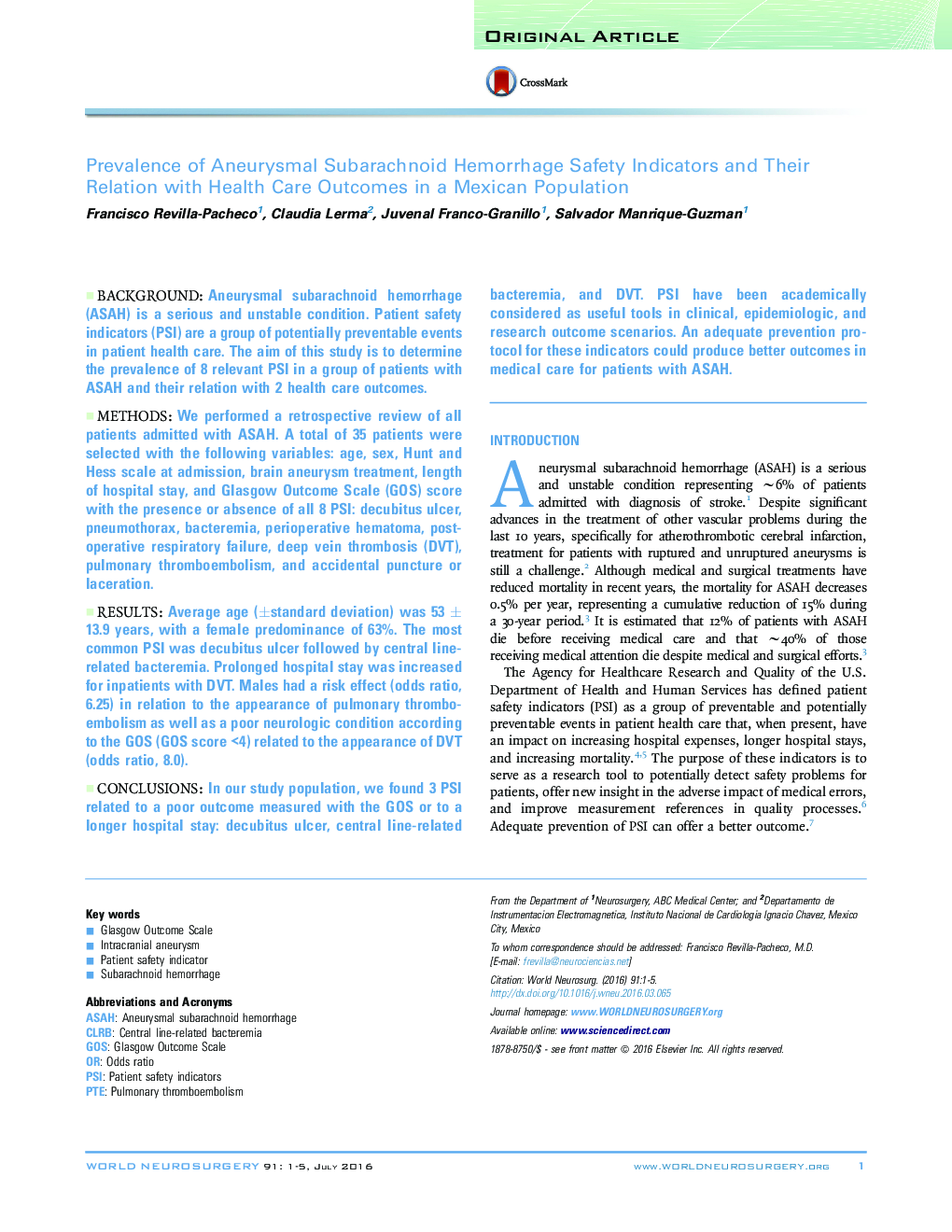| Article ID | Journal | Published Year | Pages | File Type |
|---|---|---|---|---|
| 3094519 | World Neurosurgery | 2016 | 5 Pages |
BackgroundAneurysmal subarachnoid hemorrhage (ASAH) is a serious and unstable condition. Patient safety indicators (PSI) are a group of potentially preventable events in patient health care. The aim of this study is to determine the prevalence of 8 relevant PSI in a group of patients with ASAH and their relation with 2 health care outcomes.MethodsWe performed a retrospective review of all patients admitted with ASAH. A total of 35 patients were selected with the following variables: age, sex, Hunt and Hess scale at admission, brain aneurysm treatment, length of hospital stay, and Glasgow Outcome Scale (GOS) score with the presence or absence of all 8 PSI: decubitus ulcer, pneumothorax, bacteremia, perioperative hematoma, postoperative respiratory failure, deep vein thrombosis (DVT), pulmonary thromboembolism, and accidental puncture or laceration.ResultsAverage age (±standard deviation) was 53 ± 13.9 years, with a female predominance of 63%. The most common PSI was decubitus ulcer followed by central line-related bacteremia. Prolonged hospital stay was increased for inpatients with DVT. Males had a risk effect (odds ratio, 6.25) in relation to the appearance of pulmonary thromboembolism as well as a poor neurologic condition according to the GOS (GOS score <4) related to the appearance of DVT (odds ratio, 8.0).ConclusionsIn our study population, we found 3 PSI related to a poor outcome measured with the GOS or to a longer hospital stay: decubitus ulcer, central line-related bacteremia, and DVT. PSI have been academically considered as useful tools in clinical, epidemiologic, and research outcome scenarios. An adequate prevention protocol for these indicators could produce better outcomes in medical care for patients with ASAH.
